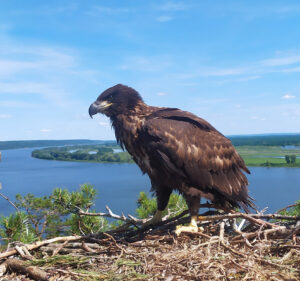Third International Scientific and Practical Conference “Eagles of the Palearctic: Study and Conservation”
Raptors Conservation. Suppl. 2. Proceedings of Conferences
The diet of the White-Tailed Sea Eagle in South Moravia, Czech Republic
Horal D. (Czech Society for Ornithology; Nature Conservation Agency of the Czech Republic, Brno, Czech Republic)
Beran V. (ALKA Wildlife, Ústí nad Labem, Czech Republic)
Contact:
David Horal david.horal@seznam.cz
Václav Beran lutra@email.cz
Recommended citation: Horal D., Beran V. The diet of the White-Tailed Sea Eagle in South Moravia, Czech Republic. – Raptors Conservation. 2023. S2: 45–46. DOI: 10.19074/1814-8654-2023- 2-45-46 URL: http://rrrcn.ru/en/archives/34868
White-Tailed Sea Eagle (Haliaeetus albicilla) re-settled the area of South Moravia (the south-eastern region of Czech Republic) in 1984. It became a regular breeding species in 2004 and since then, the population rose up to present ca 30 breeding pairs. Its diet was studied by identification of food remains on nests, mainly during ringing of chicks (i.e. usually late April / first half of May). 605 food items were identified during 97 nest checks within the period of 1999–2023. Fish composed 47%, birds 28% and mammals 25% of the identified items. The most numerous taxa were European Hare (Lepus europaeus) – 151 inds, Carp (Cyprinus carpio) – 87, Silver Crucian Carp (Carassius auratus) – 61, Common Pheasant (Phasianus colchicus) – 54, Northern Pike (Esox lucius) – 50, and Eurasian Coot (Fulica atra) – 33. The number of food items per nest varied between 1 and 28. The interesting findings included e.g. Common Shelduck (Tadorna tadorna), Stock Dove (Columba oenas), Tawny Owl (Strix aluco), or Long-Eared Owl (Asio otus).

